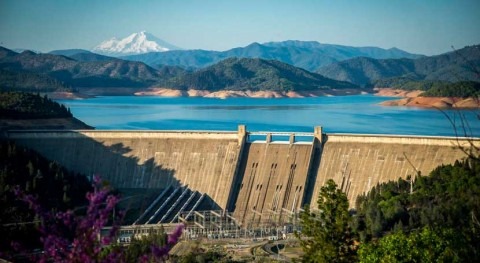Clouds are notoriously hard to pin down, especially in climate science.
A study from the University of California, Davis, and published in the journal Nature Geoscience shows that air temperature and cloud cover are strongly influenced by the buoyancy effect of water vapor, an effect currently neglected in some leading global climate models.
Global climate models are the primary tools used to study Earth’s climate, predict its future changes and inform climate policymaking. However, climate models often differ on the precise degree of future warming, largely due to their representation of clouds.
“Climate models are the best tool we have to predict future climate change,” said lead author Da Yang, an assistant professor of atmospheric science at UC Davis and faculty scientist at Lawrence Berkeley National Lab. “It’s important that we actively try to improve them.”
Cold air rises?
While conventional wisdom has it that hot air rises, the reverse is true in the tropical atmosphere, the study notes. Previous research by Yang and his colleagues proposed that cold air rises in the tropics because humid air is lighter than dry air. This effect is known as vapor buoyancy, and it regulates the amount of low clouds over the subtropical ocean.
“Vapor buoyancy influences the distribution of low clouds—the kind of clouds we have off the California coast, which contribute greatly to the global energy balance,” said Yang. “The biggest challenge in accurately predicting future climate change is clouds, so we have to get vapor buoyancy right.”
The biggest challenge in accurately predicting future climate change is clouds, so we have to get vapor buoyancy right. — Da Yang
The study reported that six of the 23 widely-used climate models analyzed do not yet include this effect because water vapor is a trace gas, so its buoyancy effect has been considered negligible. But the study shows the vapor buoyancy effect is more significant than previously realized. In climate models without vapor buoyancy, the low cloud cover can be off by about 50% in certain regions.
How clouds affect climate change
Low clouds are among the most important clouds for climate change and the energy balance of the planet because they reflect so much sunlight. Fewer low clouds can result in more absorbed sunlight and a warmer planet. More low clouds can make for a cooler landscape.
“In a warmer climate, the buoyancy effect of water vapor would be increasingly important due to more atmospheric water vapor,” Yang said. “It is worth spending more effort to understand how water vapor buoyancy regulates Earth’s climate.”
The study’s additional co-authors include UC Davis graduate student Seth Seidel and Wenyu Zhou, a former member of Yang’s group, now at the Pacific Northwest National Laboratory.













